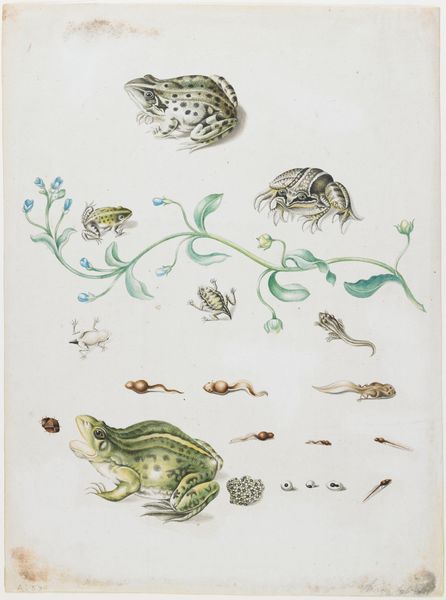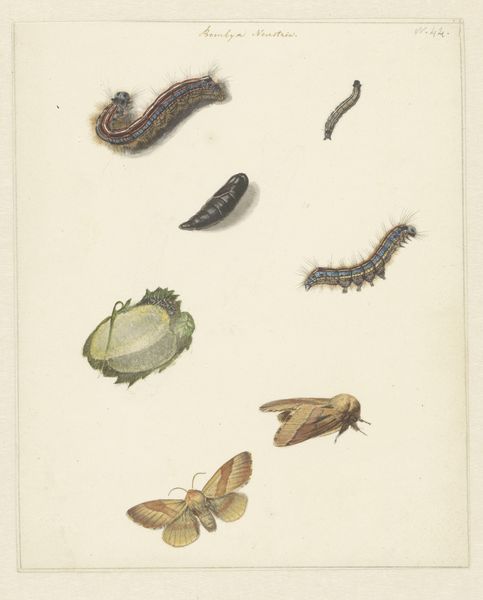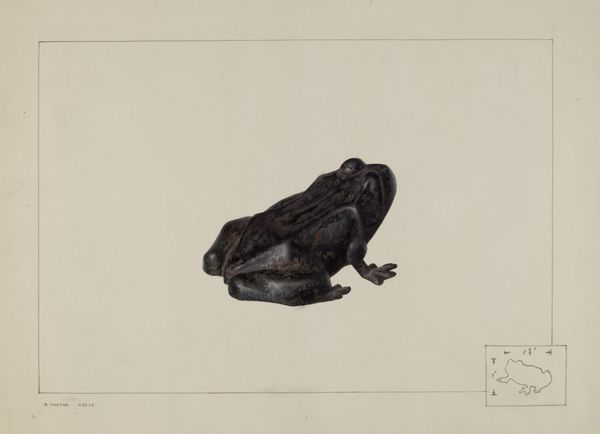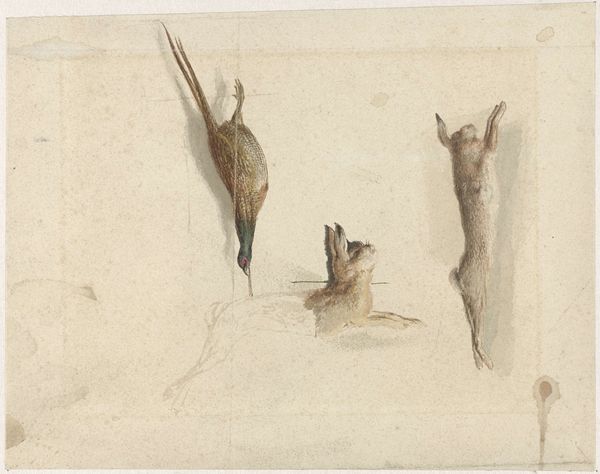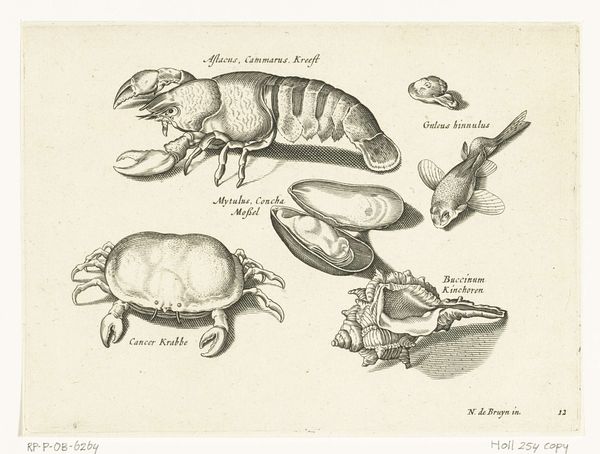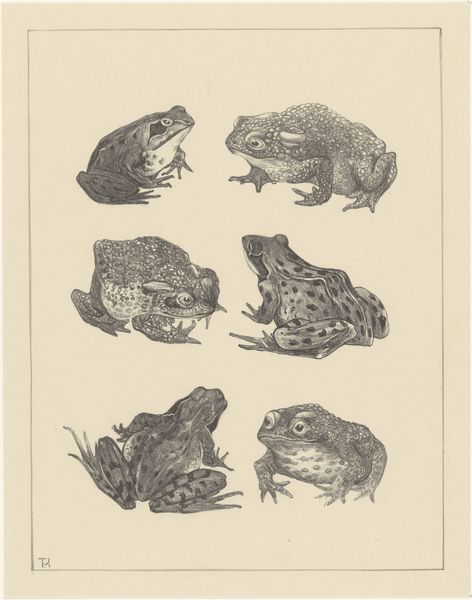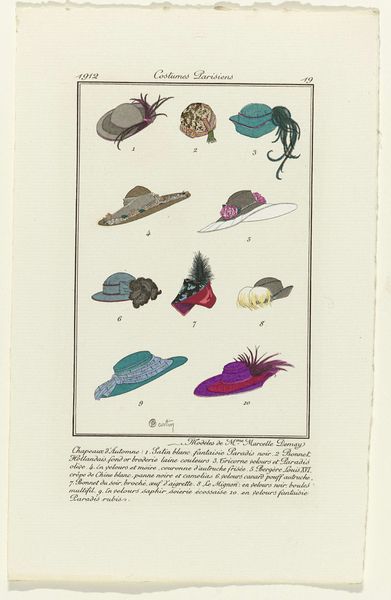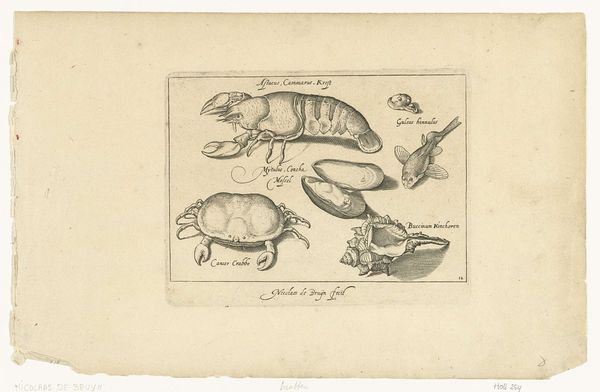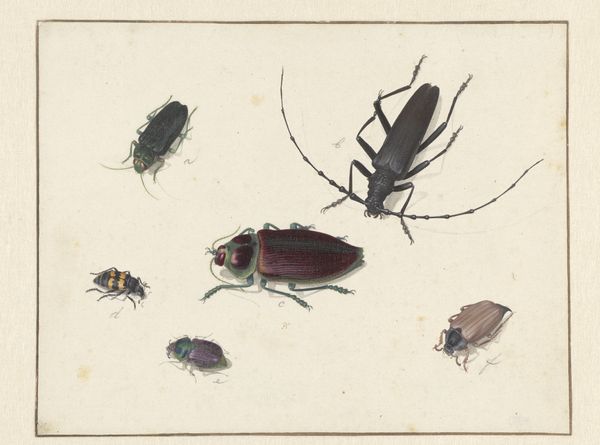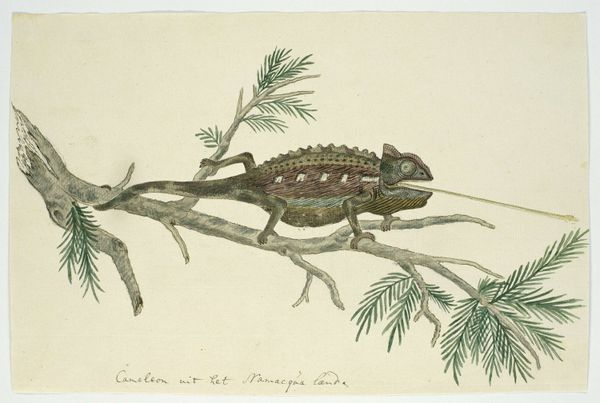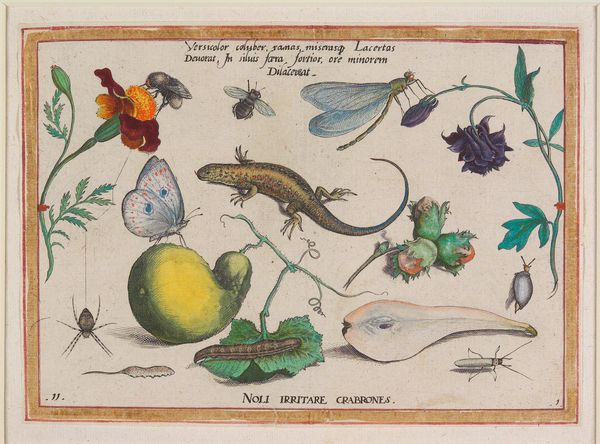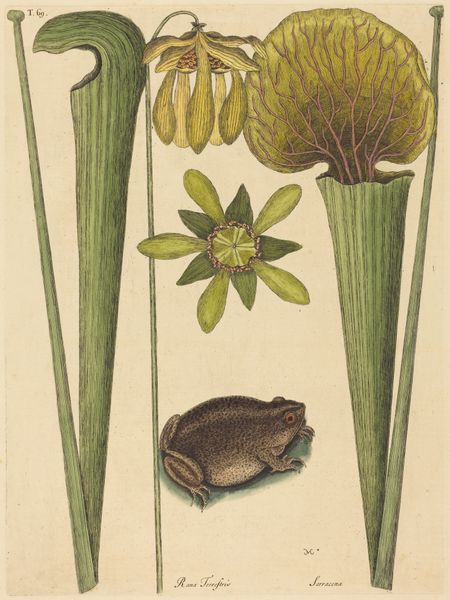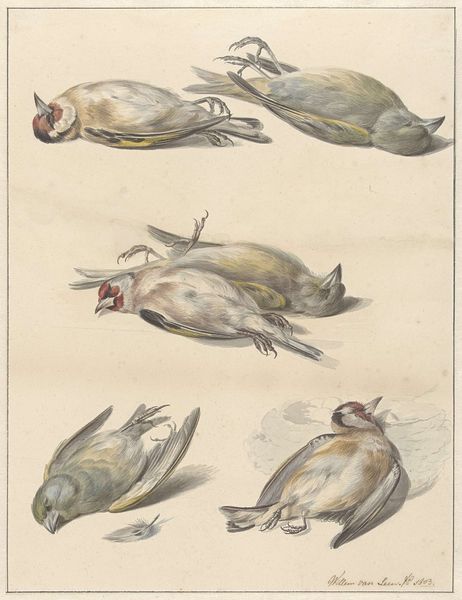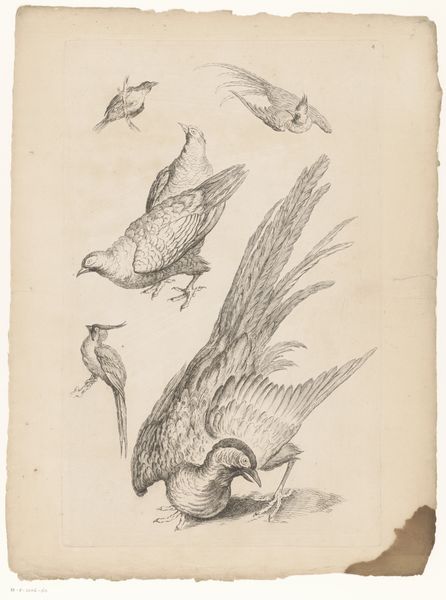
Blad met studie van een bruine landkikker rechts, links een groene waterkikker 1834
0:00
0:00
drawing, paper, watercolor
#
drawing
#
animal
#
paper
#
watercolor
#
coloured pencil
#
watercolour illustration
#
naturalism
#
botanical art
#
watercolor
Dimensions: height 160 mm, width 203 mm
Copyright: Rijks Museum: Open Domain
Curator: So, here we have "Sheet with study of a brown frog on the right, a green frog on the left" created by Albertus Steenbergen in 1834 using watercolor and drawing techniques on paper. Editor: It’s quite charming, actually. I'm immediately drawn to how still and watchful they appear. The artist really captured that reptilian stillness, a poised watchfulness. There’s an anticipatory feeling about it. Curator: Indeed. I’m fascinated by how these seemingly simple watercolor drawings open up a wider conversation about the 19th-century fascination with the natural world and the increasing scientific rigor in its depiction. Notice the details, and especially the naming. It is both a scientific depiction and an aesthetic one. Editor: It’s a very objective and detached view, but that's part of its appeal, don’t you think? It also mirrors how humans seek to understand their relationship to nature, isn't it? By classifying and illustrating it in such a detailed way? The isolated frog foot almost feels…clinical. Curator: Almost as if lifted straight from a zoological study. The study has this almost scientific recording, carefully positioning each amphibian. In many ways, these frogs stand in as a kind of a symbol for metamorphosis, the transformational state, an idea which permeates myth, science, and art in unique measure. Editor: I like that idea of the frog representing change. The ancient Egyptians associated the frog with fertility and rebirth. Given the shift from tadpole to frog, that symbolism still holds up, doesn't it? Even now, they are vital indicators of ecological health. Curator: That's very true; even now they have this almost talismanic property. They appear unassuming but become significant. We have changed our understanding and usage of them considerably since the ancient Egyptians first gave them that position in their pantheon. Editor: Definitely. What I like about it is the connection between our human perception of something and the actual lived experience of the creature itself. Even in the natural sciences this happens, right? We give meanings and names which fit our purposes as humans, even when they are far from accurate. But yes, frogs representing our transition into and out of situations, yes, I would agree. Curator: A lens refracting our past, our present, and, maybe, our future selves? I like that a lot! Thank you, very illuminating indeed! Editor: My pleasure. It made me think a little bit more about how we understand the world we're inhabiting together.
Comments
No comments
Be the first to comment and join the conversation on the ultimate creative platform.
